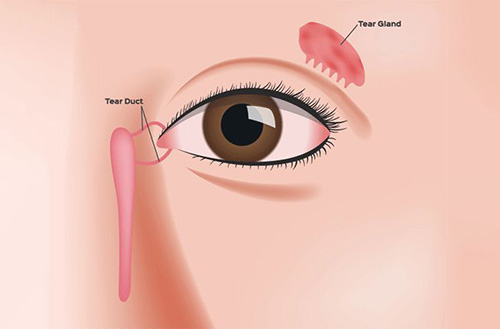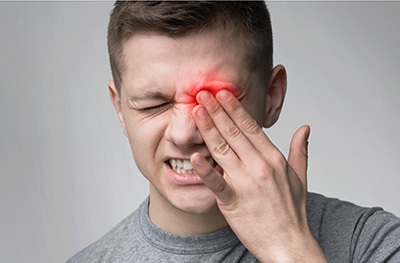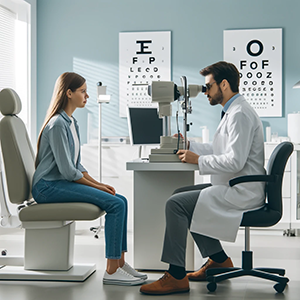Contents
In the case of dry tear ducts, your eyes may feel constantly dry due to a lack of tear production. The tear ducts, sometimes called lacrimal or nasolacrimal ducts, are essential for keeping our eyes healthy and lubricated. They are in charge of directing tears from the eyes’ surface into the nasal cavity. However, when these ducts aren’t working correctly, people may have dry tear ducts, which can be uncomfortable and cause problems.
Understanding the Tear Drainage System

Understanding the tear drainage mechanism is crucial before determining the reasons for dry tear ducts. The lacrimal glands located above each outer corner of the eye secrete tears. These tears coat the eye’s surface, providing moisture, nutrition, and defense. Excess tears are expelled through tiny holes called puncta at the inner corner of the upper and lower eyelids after lubricating the eye. The canaliculi, which connect the puncta to the lacrimal sac, are narrow channels through which the tears go. The tears eventually travel via the nasal cavity and down the nasolacrimal duct.
Causes of Dry Tear Ducts
- Tear duct blockage or narrowing
A blockage or constriction of the tear ducts, which limits normal drainage, is one of the main reasons for this condition. There may be various causes for this., such as:
- Congenital blockage: Some people have partially or entirely blocked tear ducts from birth. Congenital nasolacrimal duct blockage frequently resolves within the first year of life.
- Acquired obstruction: Later in life, blockages may also appear due to inflammation, injury, infections, or abnormal growths in the tear ducts. Nasal polyps, tumors, chronic sinusitis, and scar tissue development are typical causes.
Inflammation and Infections
Dryness can result from inflammation and infections of the tear ducts, which can prevent them from working normally. Tear drainage may be hampered by chronic conjunctivitis or dacryocystitis, an inflammation of the tear sac.
Aging
Our tear drainage system may alter as we age, resulting in dry tear ducts. The canaliculi may grow more rigid or smaller, decreasing the effectiveness of tear drainage. Dryness may also be influenced by aging-related changes in tear composition and reduced tear production.
Dry Eye Disease

Dry eye syndrome, characterized by inadequate tear production or poor tear quality, may indirectly impact tear drainage. In this circumstance, appropriate lubrication may cause greater evaporation, resulting in slower or insufficient tear drainage.
Other Factors
Antihistamines and decongestants are two drugs that can reduce tear production and cause dry tear ducts. Furthermore, injuries to the face or eyes, such as fractures or operations, may harm the tear ducts, leading to dryness.
Aggravating dry tear ducts might make it difficult for the eye to perform regularly. Understanding the underlying causes of this condition is vital for a definitive diagnosis and potent treatment.
Let’s say you have signs like excessive tearing, frequent infections of the eyes, or ongoing dryness around the eyes. A professional in eye care must be consulted in that situation. They can assess your tear drainage system and make the best treatment recommendations.

Natural Remedies for Dry Tear Ducts
- Take vitamin A (25,000 IU) for only several days. Eat plenty of green and yellow vegetables and drink carrot juice. A lack of it causes small openings to close down.
- You should include enough essential fatty acids, including omega-3, in your diet (flaxseed oil is an outstanding source) and more calcium.
- Avoid consuming excess junk, sugar, saturated fat, and processed foods.
- Increase water intake.
- Take a B complex supplement with extra B12 and zinc.
Health Disclaimer: The information on this website is for educational uses only and is not a substitute for professional medical advice. Always consult an authorized healthcare provider for any health concerns before using any herbal or natural remedy. We do not establish, treat, cure, or prevent any disease. Reliance on any material from this website is solely at your own risk. We are not responsible for any adverse effects resulting from the use of information or products mentioned on this website.
REFERENCES
- Vance Ferrell Harold M. Cherne, M.D. The Natural Remedies Encyclopedia [Book]. – Altamont, TN: Harvestime Books, 2010. – Vol. Seventh Edition: 7: pp. 394.
- The Impact of Dietary Fatty Acids on Tear Film Quality and Ocular Surface Health: https://www.ncbi.nlm.nih.gov/pmc/articles/PMC7862983
- Oral omega-3 fatty acid supplementation for dry eye disease: A meta-analysis of randomized controlled trials: https://pubmed.ncbi.nlm.nih.gov/25756794
- Vitamin A and Eye Health: https://www.ncbi.nlm.nih.gov/pmc/articles/PMC3956648
- The Effects of Lid Warm Compresses in Meibomian Gland Dysfunction: https://www.ncbi.nlm.nih.gov/pmc/articles/PMC4141980
- Effect of Lid Hygiene on Tear Film Stability and Dry Eye Symptoms: https://pubmed.ncbi.nlm.nih.gov/22767195
- Artificial Tears in the Management of Dry EyeSyndrome: https://pubmed.ncbi.nlm.nih.gov/25534933
